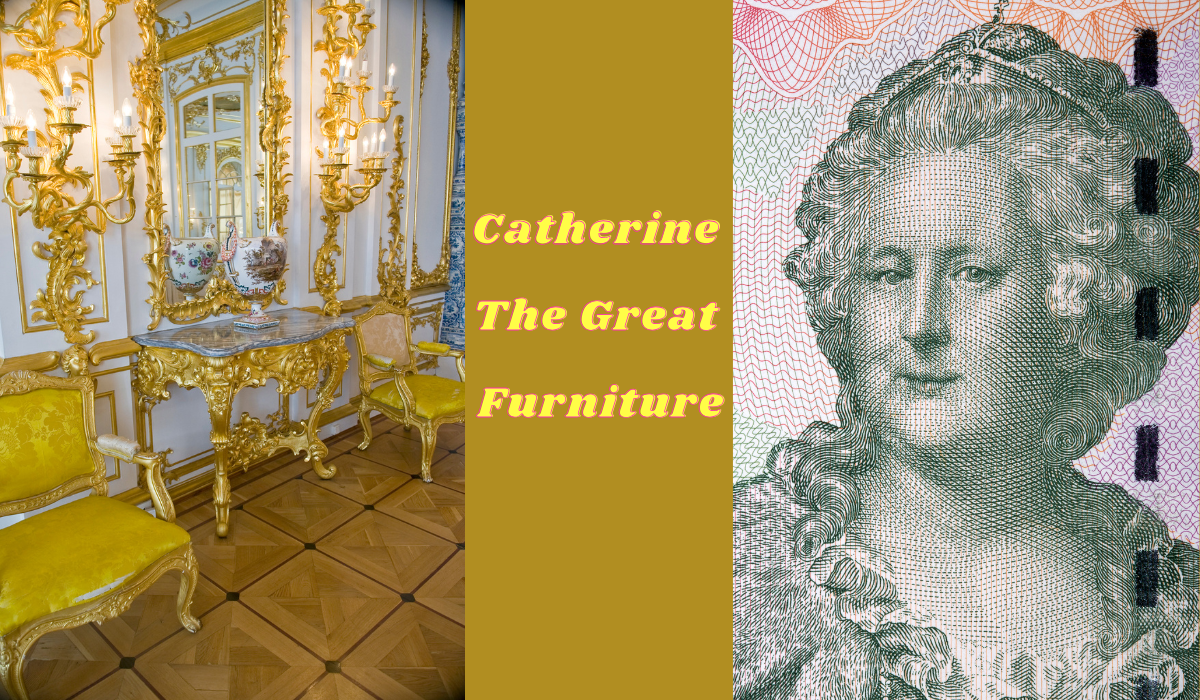Catherine the Great, one of Russia’s most illustrious rulers, is celebrated not only for her political acumen, but also for her profound appreciation of art, architecture, and design. Among her many contributions, her patronage of exquisite furniture craftsmanship stands out as a testament to her taste and vision. Catherine’s furniture offers a glimpse into the opulent imperial lifestyle, combining European influences with Russian artistry.
This blog takes you on a captivating tour of Catherine the Great Furniture—exploring its design, cultural impact, and relevance to modern aesthetics.
What Made Catherine the Great’s Furniture Unforgettable?
Catherine the Great’s furniture reflected a sophisticated blend of European and Russian styles. From ornate gilding to intricate carvings, her collection was not just functional, but symbolic of imperial grandeur. Beyond aesthetics, this furniture played a role in demonstrating Russia’s place among the elite European courts of the time.
Highlights of Catherine’s furniture include:
- European Influence:
Catherine embraced Rococo and Neoclassical styles, which dominated European design in the 18th century. Through her passion for art and architecture, she commissioned French and Italian artisans to create decorative masterpieces that merged elegance with utility.
- Quality of Materials:
Rare mahogany, gilt bronze, and luxurious fabrics such as velvet and silk were commonly used in furniture pieces during her reign. Each material symbolized wealth, sophistication, and power.
- Cultural Significance:
These pieces were more than decorative. They embodied a deliberate effort to position Russia as a culture-rich empire on par with European monarchies.
Now, let’s explore some notable examples of Catherine the Great’s furniture.
Iconic Examples of Catherine the Great’s Furniture
Here are six standout pieces from Catherine’s collection, each showcasing exquisite craftsmanship and unparalleled attention to detail:
1. The Catherine II Writing Desk
- Description: A Rococo masterpiece made of fine rosewood with inlays of brass and mother-of-pearl. Catherine herself used this elegant desk for correspondence.
- Highlight: It demonstrated the intricate artistry of French craftsmen and remains an icon of functional luxury.
2. The Russian Neoclassical Sofa
- Description: Featuring clean lines, floral patterns, and gold accents, this sofa marked the shift from Rococo to Neoclassicism.
- Highlight: It showcased Catherine’s evolving taste, adapting to the refined simplicity of Neoclassical design.
3. The Winter Palace Chairs
- Description: Elegant ivory-inlaid chairs with luxurious upholstery and gilded carvings, designed for official ceremonies.
- Highlight: These chairs symbolized the opulence of Catherine’s court and stood as statements of power.
4. Catherine’s Porcelain Commode
- Description: Decorated with porcelain plaques and gilt bronze, this commode blended utility and extravagance.
- Highlight: A perfect example of Rococo’s intricate charm, echoing Catherine’s appreciation for ornamental beauty.
5. The Imperial Writing Table
- Description: A grand table adorned with carvings of eagles, her monogram, and exquisite detailing. Made from rare woods, it served as Catherine’s official correspondence hub.
- Highlight: Merging utility with regal elegance, this table symbolized her administrative prowess.
6. The Empress’s Bed
- Description: An ornately crafted mahogany bed with gilded decorations and sumptuous upholstery in velvet and silk.
- Highlight: It encapsulated comfort, luxury, and imperial magnificence, serving as a central piece in her private chambers.
Why Was Catherine the Great’s Furniture Designed This Way?
The design of Catherine’s furniture was deliberate, embodying grandeur and authority. But why did she prioritize such intricate craftsmanship? Here’s a deeper look:
- Europe Meets Russia:
Catherine introduced European aesthetics to traditional Russian decor, redefining imperial interiors. Her love for art and culture was translated into furniture that merged local and foreign elements.
- Symbol of Power:
The furniture wasn’t merely decorative. It signified her dominance as a ruler. The exquisite carvings, gilded accents, and use of regal colors like gold and deep blue conveyed authority.
- Imperial Splendor:
Each piece was a statement of luxury and refinement, designed to evoke admiration and establish Russia as a cultural and artistic force.
The Materials Behind the Masterpieces
The opulence of Catherine’s furniture relied on the highest-quality materials available at the time. Here’s a look at what made her collection so extraordinary:
- Mahogany: Valued for its durability and deep color, mahogany was often enhanced with gold and bronze accents.
- Gilt Bronze: Gold-plated bronze elements added a regal touch, commonly used for ornamental legs, handles, and carvings.
- Silk and Velvet Upholstery: Luxurious fabrics in royal hues like scarlet, gold, or deep blue made seating both comfortable and resplendent.
The Legacy of Catherine’s Furniture in Modern Design
The elegance of Catherine’s furniture has left an indelible mark on contemporary design. Many of today’s high-end furniture brands draw inspiration from Neoclassical and Rococo styles introduced during her reign. Here’s how her influence persists:
- Class and Sophistication:
Modern interiors still emulate Catherine’s use of symmetry, intricate carvings, and rich materials to create an aura of luxury.
- Replicas and Inspiration:
Many enthusiasts seek replicas of Catherine’s furniture, incorporating elements like gilding and hand-carved wood into their homes.
- Craftsmanship Techniques:
Artisans and designers still study the techniques employed during Catherine’s era, striving to achieve the same level of excellence.
A Testament to Imperial Splendor
Catherine the Great Furniture wasn’t just about luxury—it was an artistic and cultural declaration of Russia’s place in the world. From ornate desks to gilded chairs, her collection continues to inspire artisans, historians, and admirers alike. By merging local craftsmanship with European influences, Catherine created a lasting legacy of elegance, innovation, and imperial grandeur.
Whether you’re a history enthusiast or an interior design aficionado, Catherine’s furniture is a reminder of the enduring power of art and design in shaping culture.
FAQs About Catherine the Great Furniture
Q1. Where can I see Catherine the Great Furniture today?
You can view many original pieces in the Hermitage Museum in St. Petersburg, Russia. This museum houses several well-preserved examples of Catherine’s furniture.
Q2. What influenced Catherine’s choice of furniture style?
Catherine was heavily influenced by European trends, particularly Rococo and Neoclassical styles from France and Italy. She also aimed to position Russia as a culturally influential empire.
Q3. What materials were prominently used in her furniture?
Rare woods like mahogany, gilt bronze, and luxurious fabrics such as silk and velvet were frequently used to craft her furniture.
Q4. Why is Catherine’s furniture historically significant?
Her furniture represented more than aesthetic beauty—it symbolized power, cultural sophistication, and Russia’s connection with elite European monarchies.

